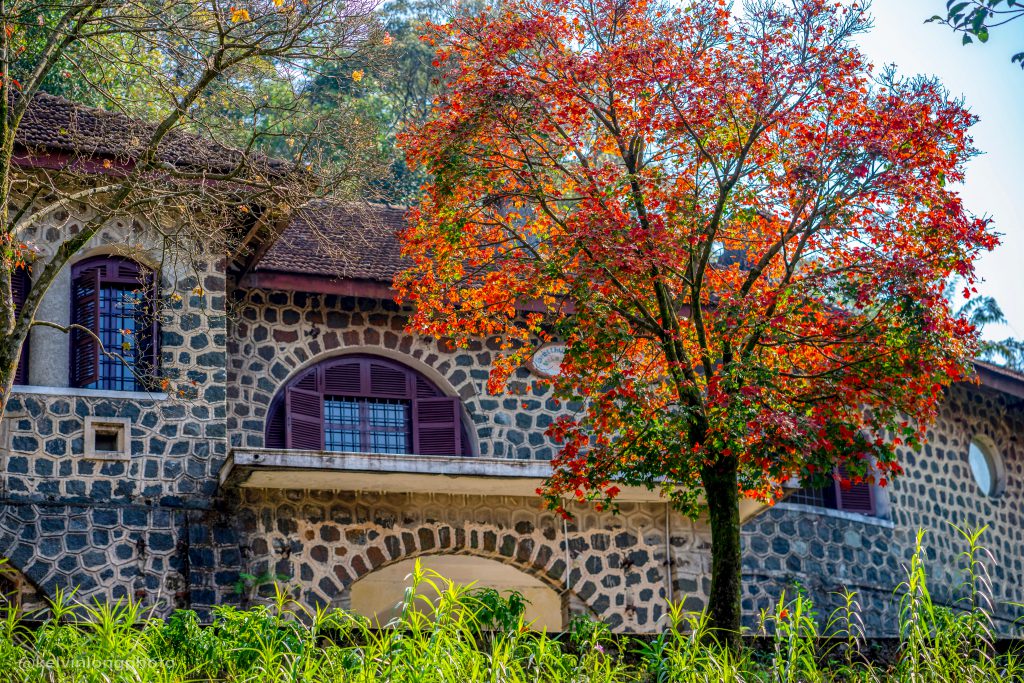Story: Ngo Quang Minh
Photos: Nguyen Phong
History and natural beauty meet on Bach Ma Mountain.

Standing upon the sacred peak of Bach Ma and gazing toward the ancient capital of Hue as sunset gently falls, we recall a line of poetry: “Looking back at the Southern sky, remembering the Sacred Capital”. Bach Ma has stood witness to historic bonds that have spanned over a thousand years and linked this land, the sky, and our country, Vietnam.
Over 90 years ago, Bach Ma was explored and developed into a resort for the French colonial administration. Later, it served as a military high point during the anti-American resistance war, protecting the North-South supply route of the liberating army. When peace was restored, the area was expanded and turned into Bach Ma National Park, with a total area of more than 37,000 hectares, straddling the border of Thua Thien Hue province and Danang city. Nestled beside the Annamite range and facing the sea, this park truly lives up to its name, which means ‘White Horse of the Southern Sky’.
This pristine and breathtaking place boasts majestic, romantic landscapes with high mountains, tall waterfalls, and crystal-clear, cool lakes. Embracing a stretch of virgin forest extending from the Vietnam-Laos border to the East Sea, Bach Ma is home to a variety of rare tropical fauna and flora, including endemic species listed in Vietnam’s Red Data Book. Rich nature and a plethora of exotic flowers that bloom most vibrantly every spring lend Bach Ma an ethereal beauty. Meanwhile, from Hai Vong Dai Lookout at the peak, one can see the two major cities of Hue and Danang, and savor mountain breezes and the deep, savory taste of the sea. The gentle coolness reminiscent of Sapa and Dalat, blended with the salty flavor characteristic of coastal cities like Nha Trang and Vung Tau, renders Bach Ma unique.
Besides the towering Hai Vong Dai, Bach Ma resembles an ink-wash painting, with the poetic Ngu Ho (Five Lakes) forming a focal point. This is essentially a chain of five lakes situated side by side, each with its own unique shape and beauty, hidden within ancient forests and rocks, as if awaiting discovery by adventurers. If the first lake is crystal-clear, elongated, and curved like a crescent moon, the second lake is broad with many large, smooth granite crevices, polished over time by the flowing water. The third lake is small and gentle, with water flowing down to its waterfall base, forming a funnel-like shape. The fourth lake has an oval shape with undulating waves and large rocks dividing the water into two big waterfalls. Lastly and most beautifully, the fifth lake is expansive, with transparent water reflecting the colors of the sky, mountains, and forests. Here, visitors can not only enjoy the view but also swim freely, indulging in the cool water after the strenuous walk to the lake. There’s truth in the phrase: “To admire trees, go to Cuc Phuong; to watch animals, visit Cat Tien; but to bathe in waterfalls, you must ascend to Bach Ma!”

Starting from Km.16 on Bach Ma Road, there’s a small trail approximately 1.5km long leading to another spectacular waterfall: Do Quyen Waterfall. After a 30-minute walk on a gently sloping path through the forest, visitors will stand before this mighty waterfall, which towers over 300 meters high. Do Quyen Waterfall is the source of the Ta Trach River (about 67km long), which flows through the Bach Ma range and, upon reaching Bang Lang (or Tuan) junction, merges with the Huu Trach branch (around 60km long), forming a soft ribbon of water over 80km long – the legendary Huong River amid the dreamy land of Hue. The waterfall is named ‘Do Quyen’ because, in the spring, many azaleas bloom nearby, their radiant red blossoms embracing the cliffs and streams. The scenery they paint is as beautiful as any masterpiece. Do Quyen is also hailed as one of Southeast Asia’s highest waterfalls, with the path down to its base comprised of nearly 700 stone steps. The white froth of the waterfall fills the air, along with the roaring sound of the ‘Milky Way falling from the clouds’ amid the sacred mountains. The ‘Do Quyen ribbon’ is both solemn and magnificent.










